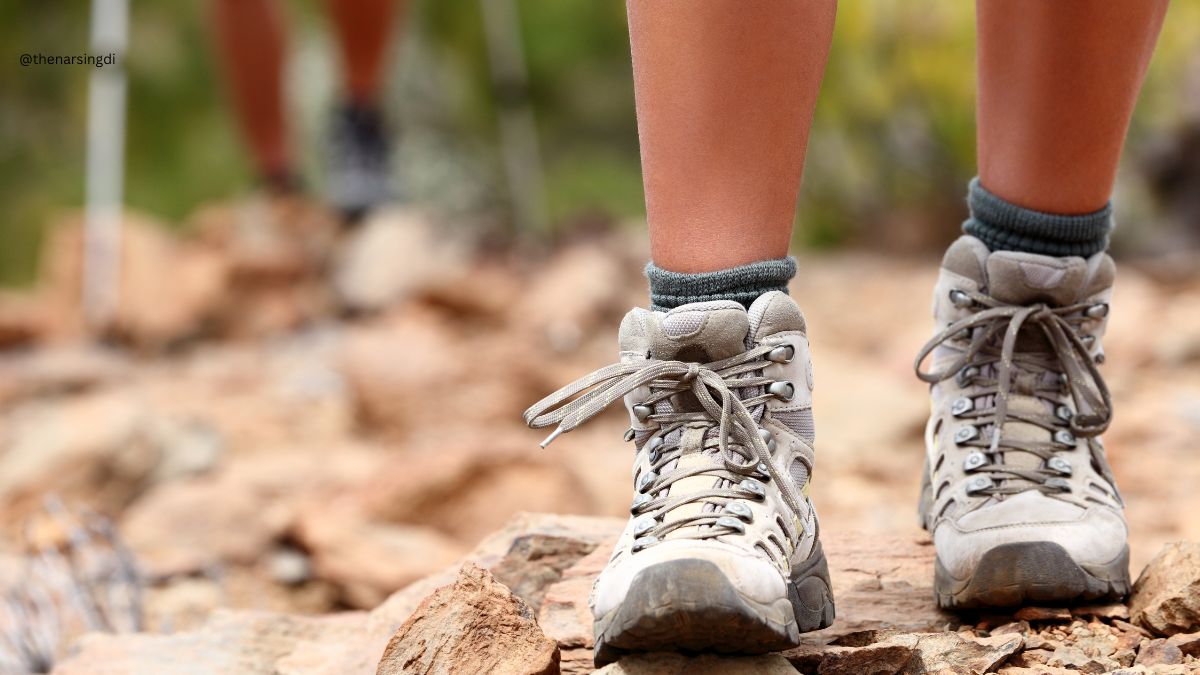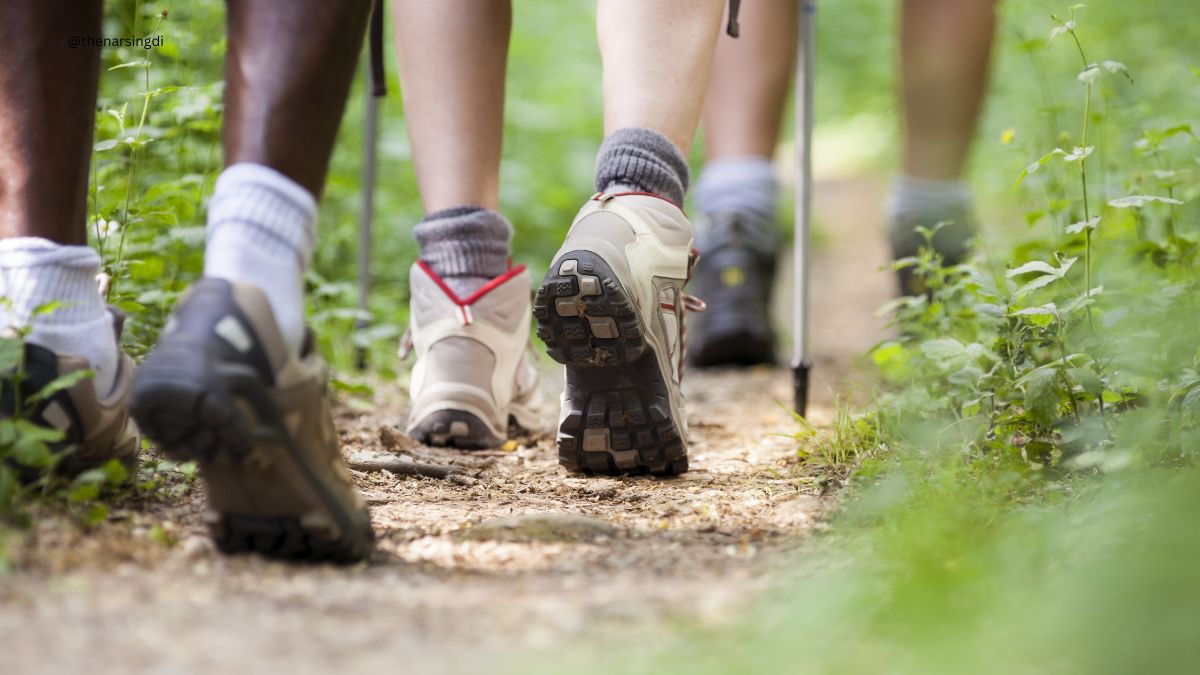When it comes to exploring the great outdoors, choosing the right footwear can make all the difference.
Trekking and hiking are two popular activities, but they each have specific footwear requirements that cater to different terrains and levels of difficulty.
Trekking shoes are designed for extended journeys on challenging trails, offering superior support, durability, and protection. They’re built to handle rough and uneven surfaces while providing comfort for long periods of walking.
Hiking shoes are great for more limited trips and less requesting trails. They focus on lightweight design and flexibility, ensuring agility and comfort on various surfaces.
Understanding these trekking vs hiking shoes will help you select the best shoes for your next adventure, enhancing your performance and overall experience.
What is trekking shoes?
TOC
Trekking shoes are specialized footwear designed for hiking and outdoor adventures. They provide the necessary support, traction, and protection needed to navigate rough and varied terrain. Unlike regular sneakers or casual shoes, trekking shoes are built with durability in mind, featuring sturdy materials like leather or synthetic fabrics that can withstand the elements.
These shoes typically have rugged soles with deep treads to ensure grip on slippery or uneven surfaces. They also offer ankle support to prevent injuries on uneven ground and often include waterproofing features to keep feet dry in wet conditions. Additionally, trekking shoes are designed with cushioned insoles to enhance comfort during long hikes and to reduce foot fatigue.
Choosing the right trekking shoes is essential for a safe and enjoyable hiking experience. Factors to consider include the type of terrain, weather conditions, and the duration of the trek. Investing in high-quality trekking shoes can make a significant difference in performance and comfort on your outdoor adventures.
What is hiking shoes?

Climbing shoes are specific footwear intended for outside traveling and climbing exercises. Dissimilar to standard shoes, they offer improved help, steadiness, and insurance to deal with assorted and rough landscapes. These shoes are built with durable materials such as leather, synthetic fabrics, or a combination, which provide resistance against abrasions and environmental elements. The soles of hiking shoes are often equipped with deep, multi-directional treads to ensure a firm grip on slippery or uneven surfaces.
Additionally, hiking shoes feature reinforced toe caps and cushioned midsoles to absorb impact and reduce foot fatigue during long treks. They come in various designs, including low-cut models for flexibility and high-cut options for ankle support. Choosing the right hiking shoe is crucial for comfort and safety on the trail, making it essential to consider factors like terrain type, weather conditions, and personal foot anatomy when selecting your footwear.
Trekking vs Hiking Shoes:
When selecting the right footwear for outdoor adventures, understanding trekking vs hiking shoes is essential. The two kinds are intended to deal with different territories, however they take special care of various requirements.
Hiking Shoes: Versatility and Comfort
Hiking shoes are ideal for those who enjoy day hikes or short treks on well-established trails. They offer lightweight comfort and flexibility, making them perfect for moderate terrains. Key features of hiking shoes include:
- Support: They provide sufficient ankle support but are not as rigid as trekking shoes. This design allows for greater mobility and comfort during day hikes.
- Sole: Hiking shoes typically have a more flexible sole that balances cushioning with traction. This flexibility helps in navigating uneven surfaces while maintaining comfort.
- Breathability: They often come with breathable mesh uppers, ensuring your feet stay cool and dry during lighter hikes.
- Weight: Generally lighter, which reduces fatigue on shorter trails.
Trekking Shoes: Durability and Support for Challenging Terrains
Traveling shoes are worked for additional requesting conditions, including multi-day journey and rough paths. They offer superior support and durability, crucial for handling challenging terrains. Key features of trekking shoes include:
- Support: Designed with high-cut ankle support and a stiffer construction, trekking shoes provide enhanced stability and protection on uneven and rough surfaces.
- Sole: They feature a more robust sole with deep lugs for improved traction and grip on slippery or rocky terrains.
- Durability: Made from tougher materials such as leather or synthetic fabrics, trekking shoes are built to withstand prolonged use and harsh conditions.
- Waterproofing: Many trekking shoes come with waterproof membranes, such as Gore-Tex, to keep your feet dry in wet environments.
Choosing the Right Footwear:
The choice between hiking and trekking shoes depends on your specific needs and the nature of your outdoor activities:
- For Day Hikes: Opt for hiking shoes that offer comfort, breathability, and lightness. They are perfect for well-maintained trails and shorter outings.
- For Multi-Day Treks: Choose trekking shoes for their durability, support, and protection. They are ideal for rough terrains and extended treks where stability is crucial.
Assess your needs based on the terrain and duration of your activities to make the best choice for a safe and enjoyable experience.
Read More: Difference Between Hiking And Trekking
Extra tips:
When deciding between trekking and hiking shoes, it’s essential to consider the specific requirements of your adventure. Here are some extra tips to help you choose the best footwear:
- Evaluate Your Terrain: If you’ll be trekking on rugged, uneven ground, opt for trekking shoes with superior ankle support and robust outsoles. Hiking shoes, ideal, more flexibility and comfort.
- Consider the Weather: For wet and slippery conditions, look for trekking shoes with waterproof membranes and aggressive tread patterns. Hiking shoes may be sufficient for drier weather but might not provide the same level of protection.
- Assess Your Load: Carrying heavy loads on long treks requires shoes with additional cushioning and stability features. Trekking shoes often provide better support for heavier packs compared to standard hiking shoes.
- Check for Fit and Comfort: Guarantee a cozy fit with satisfactory space in the toe box. Trekking shoes may need more adjustment for a secure fit, especially if you plan to navigate uneven terrain or carry heavy gear.
- Review Breathability: Hiking shoes generally offer better breathability, which is beneficial for day hikes or warmer conditions. Trekking shoes may prioritize insulation and water resistance over breathability.
By considering these factors, you can select the right footwear for your adventures, ensuring comfort and performance throughout your journey.
Last call:
trekking vs hiking shoes is crucial for ensuring a safe and comfortable outdoor experience.
Trekking shoes, designed for rugged terrains and extended treks, offer superior durability, ankle support, and waterproofing, making them ideal for challenging conditions.
Hiking shoes are lighter, more flexible, and suitable for less demanding trails, providing comfort and agility for day hikes.
Understanding your specific needs and the conditions you’ll encounter will help you make the best choice.
For more tips and to explore a wide range of outdoor gear, join us on Pinterest and follow our latest updates.

Its Aliza R. Khan, a passionate travel blogger from Bangladesh. With a knack for inspecting hidden gems and sharing travel tips, I love to inspires readers to explore the world with curiosity and adventure.










